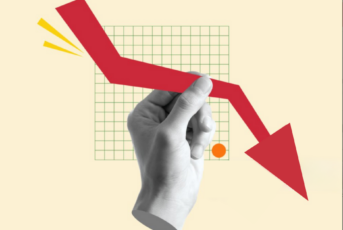What is a SPAC?
When the time comes for a company to go public, there are two main avenues: the initial public offer (IPO) or the unique purpose acquisition company (SPAC). The IPO is the better known, traditional route, but the SPAC is only now gaining popularity in the investment industry. Read this guide to learn all about this SPAC boom and how it all works.
Special Purpose Acquisition Company Explained
What exactly is a SPAC? A particular purpose acquisition company is essentially a corporation that raises capital on behalf of others through an IPO. A SPAC has no other commercial operations, meaning that it doesn’t make or sell any products or services. SPAC IPOs aims to raise enough capital to buy a private company that wants to go public. This capital is the only asset owned by a SPAC until the acquisition is complete.

What is a SPAC Stock?
A SPAC stock refers to the SPAC IPO shares. It is what investors buy when the SPAC features on the stock exchange.
What is SPAC Investing?
Let’s look at what are SPACs and how SPAC investing works.
1. SPAC Sponsors
A SPAC is a long-term creation of high-profile institutional investors and professionals who know all about private equity and hedge funds. Even billionaires and celebrities can form or sponsor a SPAC.
The SPAC then launches its IPO at about $10 per share, and the funds raised by the SPAC stock go into a trust account. At this point, the investors don’t know which company the SPAC will acquire. They must trust the SPAC sponsors to make the best decision on their behalf.
2. SPAC Timeline
The SPAC founders have a two-year window to make a merger or acquisition with the raised capital. SPAC shareholders must vote to approve the acquisition deal too, and then they have two choices: either redeem their SPAC stocks and get their money back or swap share-for-share with the merged company, which is now public.
Since the SPAC funds gain interest in the trust account, SPAC investors get their original investment plus interest. The SPAC sponsors then bring about a 20% stake in the public company too, which is a win-win.
If the two-year deadline passes, the SPAC doesn’t invest the funds in any company after the IPO closes, the SPAC will get liquidated, and all the investors still get their money back with interest.
3. SPAC Stock Explained
Keep in mind that a SPAC is a shell company or a “blank check” company. Meaning its biggest selling point is its founders. So the first thing to do before buying SPAC stock is to look at the sponsors.
Business executives, hedge fund managers, wealthy individuals with avid interest and previous investment in a specific industry—all these contribute to the success of a SPAC to woo investors.
SPAC stocks can either be public units or warrants. General units go for at $10 per unit of common stock in the SPAC IPO. Anyone can buy these SPAC public units, whether retail investors or institutions. These publicly sold units can earn a warrant to convert the unit into a larger share of stock.
Investors can buy warrants worth half, one-third, or two-thirds of the unit price, but only 12 months after the SPAC IPO or 30 days after the de-SPAC transaction (the deal that turns a SPAC into a public company).
4. SPAC Investment Banks
The SPAC issues the IPO through an investment bank that charges a broker fee out of the IPO capital, typically 10%. If the SPAC gets liquidated for any reason, investors will receive their money back with these fees deducted.
Always check the SPAC prospectus to identify the investment company and check their reputation. Ideally, you will not access your money until the founders find a good private company to acquire.
5. SPAC Target Companies
The biggest challenge for a SPAC is to identify a target company. A SPAC has between 18 and 24 months to complete the acquisition. In addition, the target company must have a market value of at least 80% or more of the SPAC funds in trust. Depending on the industry, finding a target company can be tricky because of the time restraints and the negotiations with management.
It is the reason why 100% of SPAC funds remain in a trust account and gain interest while all these activities happen in the background. At the same time, the SPAC sponsors and management team don’t earn salaries in this period either, and they can only profit once the deal closes.
This means that SPAC founders must have a significant personal stake in the company to drive the venture forward and inspire the faith of SPAC stock buyers.
Pros and Cons of SPAC Investing
Pros:
1) An Alternative Fundraising Strategy
SPAC stocks help small but valuable companies go public if they struggle to raise capital in other ways. On top of that, the Covid-19 pandemic has caused serious volatility in the market, so companies and investors are taking advantage of SPAC stocks to protect their investments.
2) Faster Process than Traditional IPO
A traditional IPO can take anywhere from six months to a year, just in the SEC registration process alone. However, merging with a SPAC is a faster route to the public market than a traditional IPO. With the proper negotiations, the acquisition can be complete within a few months.
3) Potential Long-Term Investment Opportunities
High-profile institutional and individual backers are constantly venturing into the SPAC investment space, so there are bound to be more opportunities for investors in the coming years. The heightened interest in the SPAC trend can last for longer than this current boom.
Cons:
1) Blind Investing
SPAC stock investors are going in blind, putting their faith in the SPAC sponsors rather than in a public company’s IPO. SPAC funds are usually available without knowing which company the sponsors will choose. Note that shareholders have a vote in the SPAC selection, and they can also reject the target company and leading to the liquidation of the SPAC.
Deadline Pressures for SPAC Sponsors
The two-year SPAC deadline may force compromises that the negotiating parties are unwilling to make. They might settle for the quickest deal rather than the most beneficial one, which risks the shareholders. There is also pressure on the SPAC sponsors to give their investors good returns, but not enough incentives. They may end up overpaying for the private company, only to find that it performs poorly on the stock market.
2) Low Success Rate
Unfortunately, SPACs have a low chance of success. Out of all the SPAC companies listed their IPOs in 2021, only 70% traded above their $10 price. Some experts hint that the SPAC boom is on the decline because of this performance. At the same time, investors seek better regulations around these companies for greater transparency in their target companies’ choices.
Conclusion
SPAC stocks are an interesting opportunity for private companies to go public, especially those with postponed IPOs due to the global pandemic. However, the SPAC process works best if the companies are ready for acquisition in the first place.
If a private company has already done its preparedness processes for the IPO, a SPAC acquisition can save them plenty of time and money. The key to SPAC success is project management and transparency so that all parties involved can earn returns faster and with fewer execution costs. At the end of the day, do your due diligence before diving into the SPAC markets today.
Looking for an independent fiduciary financial advisor who can advise you on investments, retirement, real estate, alternative assets, and taxes? Contact ACap Advisors & Accountants to schedule a free initial consultation. Our clients include individuals, small businesses, entrepreneurs, and anyone serious about saving and investing for their future.









